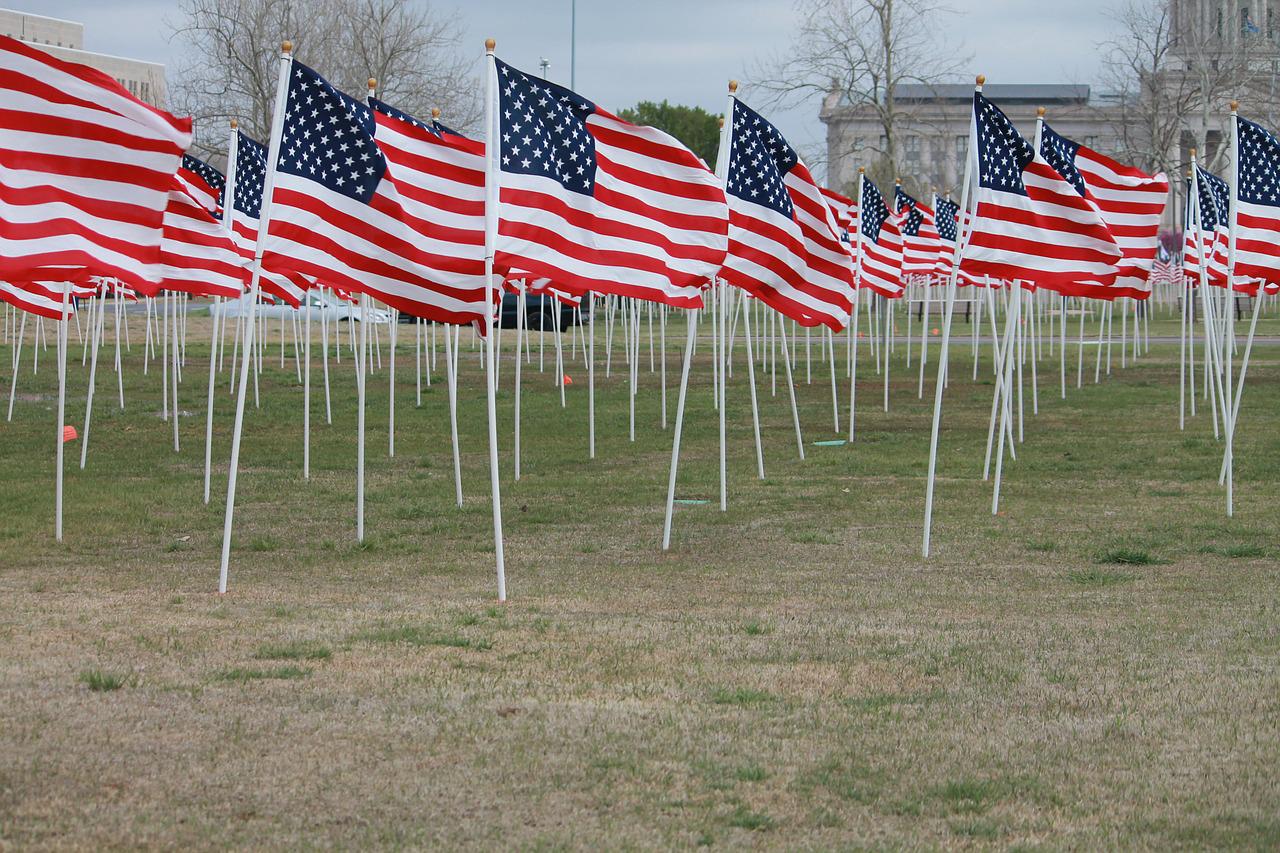
Article Summary: Historic Sites In Oklahoma
Historic Sites In Oklahoma. More Than Just Parks has 15 incredible must-see sites for you to visit.
I’ve been to so many of these amazing places since retiring from teaching in 2018. Did I mention that I taught history? I spent a lifetime teaching about the history behind these momentous sites. Then I got to see them firsthand. And now I’m sharing the stories of these incredible places with you. It doesn’t get any better than that!
I’m going to give you my list of the 15 Historic Sites In Oklahoma that you’ll want to see.
To be clear, this list includes national park sites (as in sites managed by the National Park Service) as opposed to national parks. It also includes sites not managed by the National Park Service. After all, we’re more than just parks!
If you are planning a trip to Oklahoma then you might want to pick up a copy of Weird Oklahoma: Your Travel Guide to Oklahoma’s Local Legends and Best Kept Secrets by Wesley Treat.
Without further ado, let’s dive in.
Table Of Contents: Historic Sites In Oklahoma
Top 15 Historic Sites In Oklahoma
15. Price Tower

More Than Just Parks is excited to share with you our list of the Top 15 Historic Sites In Oklahoma. These are some amazing places with incredible stories to tell. Some are managed by the National Park Service while others are not, which is fine with us because, after all, we’re more than just parks.
At #15, we begin our list of the Best Historic Sites In Oklahoma with Price Tower.
Price Tower is a nineteen-story building located in Bartlesville, Oklahoma. It was designed by the renowned architect Frank Lloyd Wright and was completed in 1956.
The building is considered a prime example of Wright’s organic architecture, which seeks to integrate the structure into its natural surroundings.
Price Tower is constructed with a concrete core and features cantilevered floors that give it a distinctive, tree-like appearance. The building’s exterior is clad in copper panels that have oxidized over time, giving the tower a greenish appearance that blends with the surrounding foliage.
Price Tower was originally built as an office building for the H.C. Price Company, a pipeline construction firm. Today, the building is owned and operated by the Price Tower Arts Center, which has converted much of the space into a museum, hotel, and event venue.
In addition to its striking design, Price Tower is known for its innovative use of interior space. Wright designed the building to be “vertical apartments,” with each floor containing office space as well as living quarters for Price Company executives. The apartments feature Wright’s signature built-in furniture and design elements that blend the indoors and outdoors.
14. George M. Murrell Home

We move on from a dazzling tower to a historic home with a fascinating backstory. At #14 on our list of the Best Historic Sites In Oklahoma is the George M. Murrell Home.
The George M. Murrell Home is a historic property located in Park Hill, Oklahoma. The home was built in 1844 and is named after its original owner, George M. Murrell, who was a prominent figure in the early history of Oklahoma.
George Murrell was born in Virginia in 1808 and moved to Oklahoma in the 1830s, following the Indian Removal Act, which forced Native American tribes to relocate to Indian Territory. Murrell married Minerva Ross, the daughter of Cherokee Chief John Ross, and built the Murrell Home on a hill overlooking the Arkansas River.
It Served As A Center Of Social & Political Activity
The Murrell Home served as a center of social and political activity in the Cherokee Nation during the mid-19th century. Murrell was a successful businessman and owned several farms and plantations throughout the region. He was also involved in Cherokee politics and served as a delegate to the National Council, the Cherokee Nation’s legislative body.
After Murrell’s death in 1861, the home was passed down to his daughter, Louisa, and her husband, Dr. Edward Deas.
The property changed hands several times over the next century and was eventually acquired by the Oklahoma Historical Society in 1946. The society restored the home to its original appearance and opened it to the public as a museum in 1948.
Today, the George M. Murrell Home is a popular tourist attraction and a testament to the rich history of the Cherokee Nation and the early settlers of Oklahoma. Visitors can tour the home and learn about the lives of George Murrell and his family, as well as the history of the Cherokee people and the early days of Oklahoma.
13. Cherokee Heritage Center

One of our goals when we prepare our lists is to select sites which offer a variety of stories about a myriad of historic events. With our next site we shift gears to tell the story of a site dedicated to preserving and sharing the history and culture of the Cherokee people, with a focus on the Cherokee Nation of Oklahoma.
At #13 on our list of the Best Historic Sites In Oklahoma is the Cherokee Heritage Center.
The Cherokee Heritage Center is a museum and cultural center located in Park Hill, Oklahoma. It was founded in 1963 as the Cherokee National Historical Society, with the goal of preserving and sharing the history and culture of the Cherokee people. The society acquired a 157-acre property in Park Hill, which includes the site of the ancient Cherokee village of Tsa-La-Gi.
See A Replica Of A 1710 Cherokee Village
In 1967, the society opened the Tsa-La-Gi Ancient Village, which is a replica of a 1710 Cherokee village. The village features traditional Cherokee homes, a council house, and a corn crib, among other structures. The village is staffed with Cherokee artisans and interpreters who demonstrate traditional Cherokee crafts and share the history and culture of the Cherokee people.
In addition to the Tsa-La-Gi Ancient Village, the Cherokee Heritage Center features several other exhibits and programs, including the Cherokee National Museum, which houses a collection of Cherokee artifacts and artwork, and the Trail of Tears Exhibit, which tells the story of the forced removal of the Cherokee people from their ancestral lands in the 1830s.
The Cherokee Heritage Center also offers educational programs and workshops for students and adults, as well as cultural events and festivals throughout the year. The center is an important resource for the Cherokee Nation and a popular tourist destination for visitors to Oklahoma.
12. A.J. Seay Mansion

Our next site tells the story of a stunning home which is truly a delight to behold. At #12 on our list of the Best Historic Sites In Oklahoma is the A.J. Seay Mansion.
It was built in 1903 by A.J. Seay, who was the second territorial governor of Oklahoma. The mansion is a stunning example of neoclassical architecture, with a symmetrical facade, Ionic columns, and a grand portico.
The mansion has three floors and over 12,000 square feet of living space. The first floor features a grand foyer with a sweeping staircase, a formal dining room, a parlor, a library, and a spacious kitchen. The second floor has six bedrooms, including the master suite, and several bathrooms. The third floor was originally used as a ballroom, but it has since been converted into office space.
The mansion is beautifully decorated with period furnishings, artwork, and other decorative elements. Many of the original features, such as the hardwood floors, stained glass windows, and hand-carved woodwork, have been carefully preserved.
Today, the A.J. Seay Mansion is open to the public for tours, and it is a popular destination for visitors to Guthrie. The mansion is also used for special events, such as weddings, receptions, and corporate events.
11. Sequoyah’s Cabin

If you love the history of indigenous peoples then you’ll enjoy visiting our next site. At #11 on our list of the Best Historic Sites In Oklahoma is Sequoyah’s Cabin.
It’s a historic property located in Sallisaw, Oklahoma. The cabin was the home of Sequoyah, a Cherokee silversmith and statesman who is best known for developing the Cherokee syllabary, a writing system for the Cherokee language.
Sequoyah was born in Tennessee in 1776 and was part of the Cherokee Nation. He became a skilled silversmith and blacksmith and traveled extensively throughout the Cherokee Nation, making and repairing tools and weapons.
He was also interested in the written word and became convinced that the Cherokee language needed a writing system to preserve and pass on its rich history and culture.
The Cherokee Syllabary
Over a period of several years, Sequoyah developed the Cherokee syllabary, which consists of 85 characters that represent the sounds of the Cherokee language. The syllabary was a major achievement and made the Cherokee language one of the few indigenous languages in the world to have a writing system.
Sequoyah’s Cabin was built in the early 1820s and is believed to be one of the few remaining structures associated with his life.
The cabin was originally located in a remote area of eastern Oklahoma and was later moved to its current location in Sallisaw. The cabin is a single-room structure made of logs and features a simple, functional design that reflects the lifestyle of the Cherokee people in the early 19th century.
Today, Sequoyah’s Cabin is operated as a museum by the Oklahoma Historical Society and is open to the public for tours. The museum features exhibits on the life and legacy of Sequoyah, as well as artifacts and memorabilia from the Cherokee Nation.
Top 10 Historic Sites In Oklahoma
10. Fort Gibson Historic Site
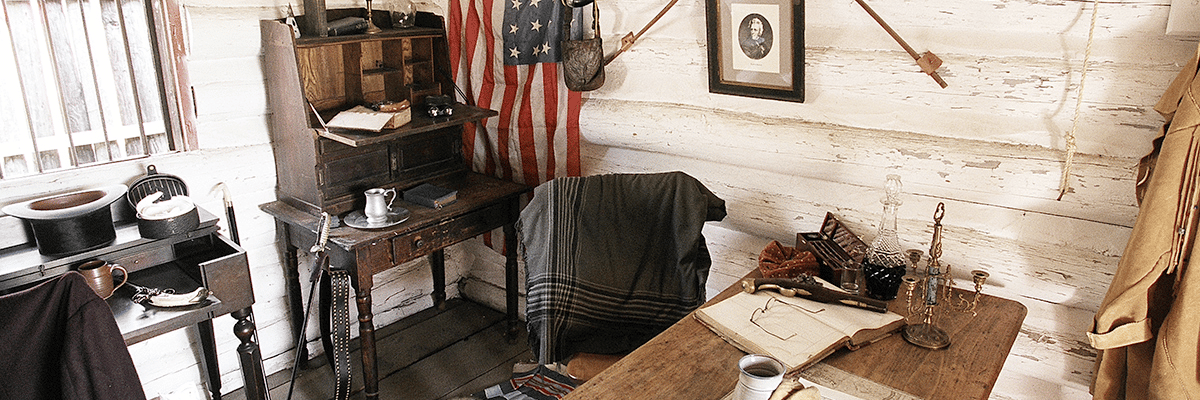
We’re on to the Top 10 Historic Sites In Oklahoma. Next up is a site which military history enthusiasts will particularly enjoy. At #10 we have the Fort Gibson Historic Site.
Fort Gibson Historic Site commemorates the history of the United States Army and the role of Fort Gibson in the development of the American West. The fort was established in 1824 by the U.S. Army as a military post to protect American settlers from Native American attacks and to serve as a base for military operations in the region.
The fort played a significant role in the American Indian Wars, and it was an important center of military activity during the relocation of Native American tribes in the 1830s and 1840s, known as the Trail of Tears.
The fort was also an important supply and communications hub during the Civil War and was used as a base for Union troops during their operations in Indian Territory.
After the Civil War, the fort was used as a base for military operations against the Plains Indians, and it served as a supply and communications hub for the U.S. Army in the region until its closure in 1894.
Things To Do
Here are some of the things to do at Fort Gibson Historic Site:
- Tour the historic buildings: The site features several historic buildings, including the barracks, officer’s quarters, and powder magazine. Take a guided tour to learn more about the history of each building and the role it played in the development of the American West.
- Explore the museum: The onsite museum features exhibits on the history of Fort Gibson and the surrounding area, including artifacts and photographs from the 19th century.
- Walk the nature trails: The site features several nature trails that wind through the woods and along the banks of the Arkansas River. Enjoy a leisurely stroll and take in the natural beauty of the area.
- Attend a special event: The site hosts special events throughout the year, including living history demonstrations, reenactments, and festivals.
- Go fishing or boating: The Arkansas River is a popular destination for fishing and boating. Bring your gear and spend the day on the water.
- Picnic: Bring a picnic lunch and enjoy a meal in one of the site’s scenic picnic areas.
- Visit the cemetery: The Fort Gibson National Cemetery is located adjacent to the historic site and is the final resting place of many soldiers who served in the American military.
- Shop in the gift shop: The onsite gift shop offers a variety of souvenirs, books, and other items related to the history of Fort Gibson and the American West.
9. Museum Of The Western Prairie

Our next site is one of the most interesting museums you’re likely to come across especially if you enjoy the history of Oklahoma. At #9 on our list of the Best Historic Sites In Oklahoma is the Museum of the Western Prairie.
The Museum of the Western Prairie is located in Altus, Oklahoma, and is dedicated to preserving and sharing the history of southwest Oklahoma. The museum tells the story of the region from the distant past to the present day, with exhibits that cover topics ranging from geology and American Indian culture to agriculture, industry, and military history.
The museum is housed in a modern building that features a spacious lobby and exhibition galleries. Visitors can explore a variety of exhibits that showcase the natural, cultural, and historical heritage of the region.
Some Of The Highlights Include:
- Geology and Natural History: The museum’s exhibits begin with the geological history of southwest Oklahoma, including the formation of the Wichita Mountains and the ancient seas that covered the area. Visitors can learn about the flora and fauna that inhabit the region today, including the bison and other wildlife that call the Wichita Mountains Wildlife Refuge home.
- American Indian Culture: The museum features exhibits on the American Indian tribes that inhabited the region before European settlement, including the Kiowa, Comanche, and Apache. Visitors can see artifacts, tools, and clothing that reflect the rich culture and traditions of these groups.
- Military History: The museum also tells the story of the frontier soldiers who were sent to the region to establish forts and protect settlers from Indian attacks. Exhibits cover the history of Fort Sill, Fort Supply, and other important military sites in the region.
- Agriculture and Industry: Visitors can learn about the development of agriculture and industry in southwest Oklahoma, including the use of irrigation to transform the arid landscape into productive farmland. Exhibits also cover the impact of the Dust Bowl and the Great Depression on the people of the region.
8. USS Batfish

We go from a fascinating look at Oklahoma’s past to the story of a submarine which had a quite a distinguished career. At #8 on our list of the Best Historic Sites In Oklahoma is the USS Batfish.
The USS Batfish is a Balao-class submarine that served in the United States Navy during World War II. The submarine was launched in May 1943 and went on to sink a total of 15 Japanese vessels and earn nine battle stars for her service.
The Batfish was first deployed to the Pacific theater in February 1944 and participated in several successful war patrols. During her third patrol, in August 1944, the Batfish sank three Japanese submarines in a single day, earning her crew a Presidential Unit Citation for their bravery and skill.
The Batfish went on to complete six war patrols during World War II, and she was also involved in several rescue missions, including the rescue of 55 survivors of the USS Harder, a submarine that had been sunk by Japanese forces in August 1944.
After the end of World War II, the Batfish was decommissioned and placed in reserve. In the 1950s, she was recommissioned and modernized to serve in the Korean War. She was again decommissioned in 1957 and placed in reserve.
In 1971, the Batfish was acquired by the Muskogee War Memorial Park in Muskogee, Oklahoma, and opened to the public as a museum. The submarine has been restored to its original World War II configuration, and visitors can tour the vessel and learn about its history and the experiences of the men who served on it.
7. Honey Springs Battlefield State Park
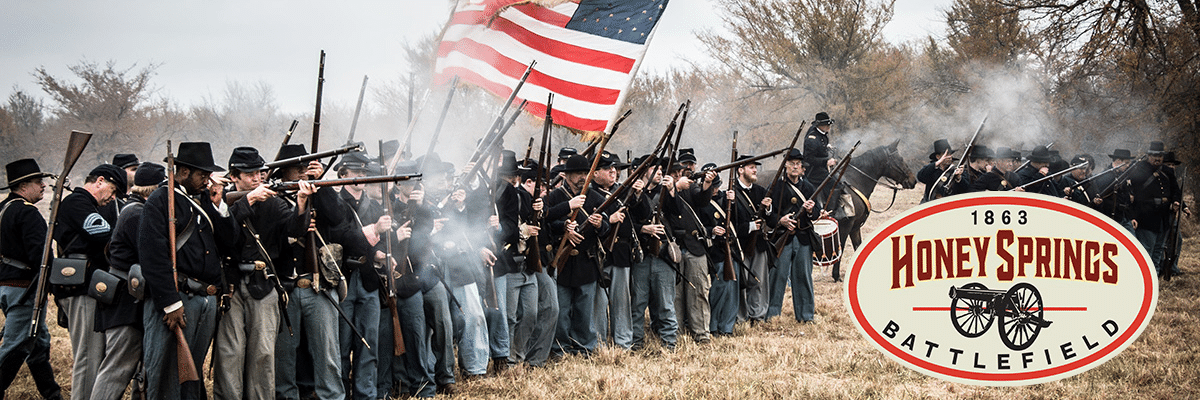
Some of the historic sites we select commemorate well known historical events while others honor lesser known ones. Our goal is to provide something for everyone and give everyone the opportunity to learn things they didn’t know before.
Our next site is a case in point as it commemorates one of the lesser known battles of the American Civil War. If you knew about it before reading this then you’re ahead of us. At #7 on our list of the Best Historic Sites In Oklahoma is Honey Springs Battlefield State Park.
A Significant Battle Of The American Civil War
The Engagement at Honey Springs was a significant battle of the American Civil War that took place on July 17, 1863, in Indian Territory.
It was the largest of more than 107 documented hostile encounters in Indian Territory, with approximately 9,000 men involved including American Indians, veteran Texas regiments, and the First Kansas Colored Volunteers, which was the first African American regiment in the Union army.
The battle was fought between the First Division Army of the Frontier, commanded by Major General James G. Blunt, and the Confederate Indian Brigade led by Brigadier General Douglas H. Cooper. Cherokee and Creek regiments fought on both sides.
The Honey Springs Battlefield site, which includes more than 1,000 acres, is now open to visitors.
It offers walking trails with interpretive signs that take visitors through the Union bivouac area, Union line of battle, the Texas regiment line of battle, which includes 1/8-mile of the original Texas Road, the battle at the bridge over Elk Creek, the final action, and Honey Springs and the Confederate supply depot.
A Visitor Center features exhibits about the battle, through artifacts, graphics, and narrative, that tell the rich history of the Battle of Honey Springs. Visitors can enjoy hiking and area wildlife while exploring the history of the Civil War in Indian Territory.
6. Chisholm Trail Museum

Our next historic site in one we’re particularly excited about as it commemorates the history of the Chisholm Trail. What was the Chisholm Trail you may be asking? Well, at #6 on our list of the Best Historic Sites In Oklahoma is a site which will definitely answer that question.
The Chisholm Trail
The Chisholm Trail was a route used in the late 19th century to drive cattle from ranches in Texas to railheads in Kansas, where the cattle could be transported by train to markets in the east. The trail was named after Jesse Chisholm, a trader and guide who helped establish the route.
The Chisholm Trail was important for several reasons. Firstly, it allowed ranchers to transport their cattle to markets in the east more easily and quickly than they could by driving them overland or shipping them by sea. This helped to fuel the growth of the cattle industry in Texas and contributed to the economic development of the region.
Secondly, the Chisholm Trail played a significant role in the history of the American West. Cowboys and drovers who drove cattle along the trail became iconic figures in American culture, and the trail itself became a symbol of the rugged individualism and freedom of the frontier.
Finally, the Chisholm Trail helped to connect different regions of the United States and facilitated the movement of goods and people across the country. The trail also had a significant impact on the development of towns and communities along its route, many of which grew and prospered as a result of the cattle trade.
The Chisholm Trail Museum
The Chisholm Trail Museum is a historical museum located in Kingfisher, Oklahoma, which is situated along the famous Chisholm Trail. The museum is dedicated to preserving the history and culture of the trail and the people who traveled it, including cowboys, ranchers, and Native Americans.
The museum features a variety of exhibits and displays that showcase the history of the Chisholm Trail and the cattle industry in the region. One of the highlights of the museum is its collection of artifacts, which includes cowboy gear, Native American artifacts, and other items from the trail’s heyday.
Visitors to the museum can also see a replica of a cattle drive camp, complete with a chuckwagon, tents, and other equipment used by cowboys on the trail. There is also a blacksmith shop, a one-room schoolhouse, and a sod house, which gives visitors a glimpse of what life was like for early settlers in the area.
The Chisholm Trail Museum also hosts a variety of events and programs throughout the year, including lectures, demonstrations, and living history events.
Overall, the museum offers a fascinating look at an important chapter in the history of the American West, and is a must-visit destination for anyone interested in the history of the Chisholm Trail and the cattle industry.
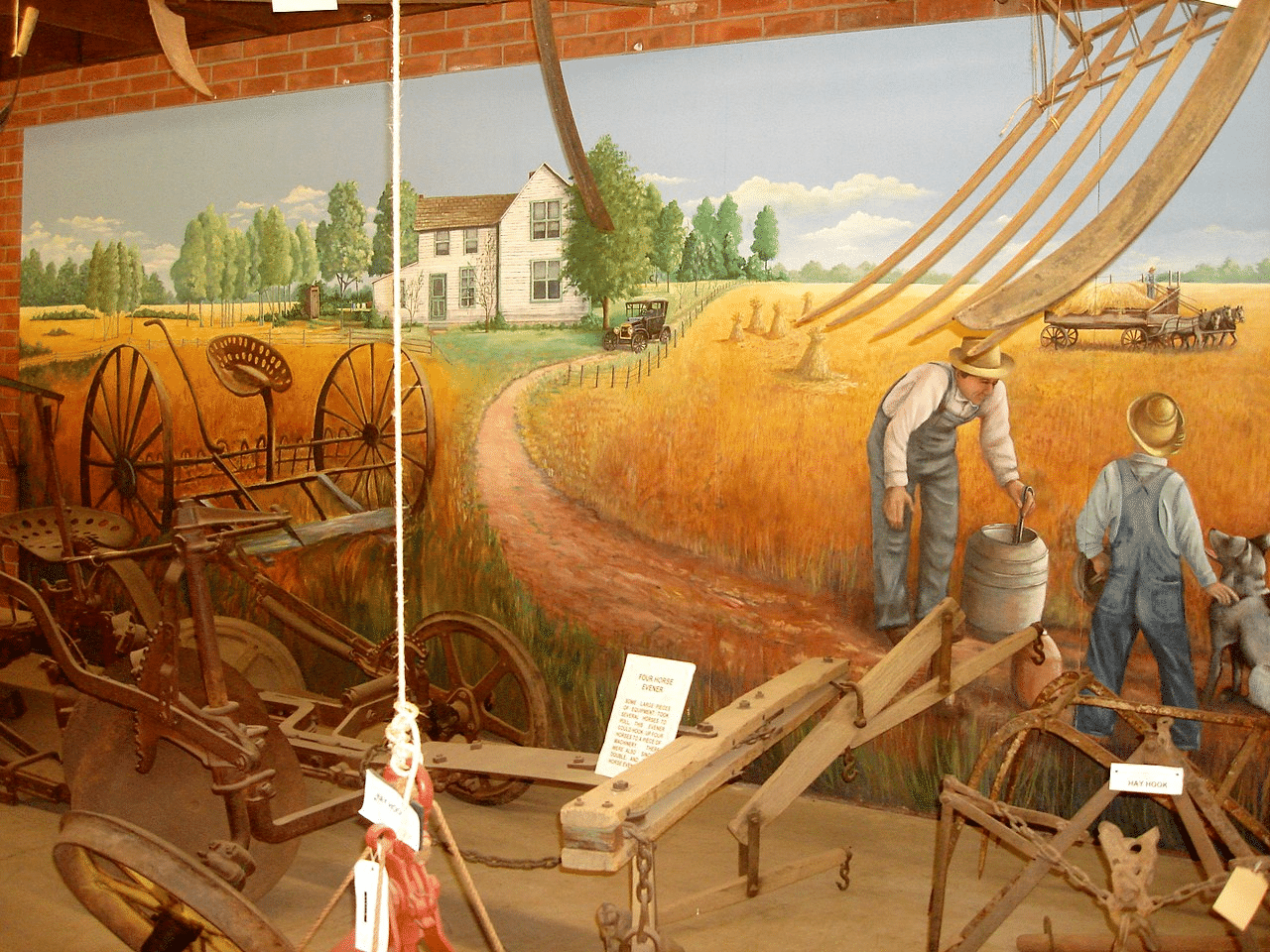
Top 5 Historic Sites In Oklahoma
5. Spiro Mounds Archaeological Center

We’re on to our Top 5 Historic Sites In Oklahoma and we’ve got some amazing sites left for you to see. At #5 on our list is the Spiro Mounds Archaeological Center.
The Spiro Mounds Archaeological Center is located in Spiro, Oklahoma. The site is home to the remains of an ancient Native American civilization that flourished in the area between 800 and 1450 AD.
The Spiro Mounds were first excavated by archaeologists in the 1930s and 1940s. The site is believed to have been a major religious and political center for the Mississippian culture, which extended throughout the southeastern United States.
The Spiro Mounds were inhabited by a complex society that engaged in agriculture, trade, and craftsmanship. The site contains the remains of several large earthen mounds that were used for ceremonial and burial purposes.
The Spiro Mounds Archaeological Center features a museum that houses a collection of artifacts from the site, including pottery, jewelry, and tools. Visitors to the museum can learn about the history and culture of the Mississippian people and the significance of the Spiro Mounds.
In addition to the museum, the Spiro Mounds Archaeological Center features a nature trail that winds through the site, offering visitors the opportunity to explore the mounds and learn about the plants and animals of the area.
The site is also home to several reconstructed structures that provide insight into the daily life of the Mississippian people, including a thatched-roof house and a wooden palisade.
4. Guthrie Historic District

Next up are the “Final Four” sites. And at #4 on our list of the Best Historic Sites In Oklahoma is a place which offers a glimpse into the American West. It’s the Guthrie Historic District. And there are so many different sites to see here!
The city of Guthrie was founded in 1889 and was the capital of Oklahoma Territory. When Oklahoma became a state in 1907, Guthrie became the first state capital until 1910, when the seat of government was moved to Oklahoma City.
A portion of the downtown Capitol Townsite Historic District is designated as a National Historic Landmark, recognizing the national importance of the downtown architecture. The listing in the National Register of Historic Places extends benefits and protections to 1,400 acres of the city.
Check Out The Historic District
Here are some things to do in Guthrie:
- Take a walking tour: Guthrie offers several walking tours that showcase its historic buildings and sites. Some of the popular tours include the Victorian Homes Tour and the Territorial Guthrie Tour.
- Visit the Oklahoma Territorial Museum: This museum provides an in-depth look at Oklahoma’s territorial history. You can explore exhibits on the land runs, early statehood, and the famous outlaws who roamed the territory.
- Explore the Scottish Rite Masonic Temple: This stunning building was completed in 1923 and features a mix of architectural styles, including Gothic, Renaissance, and Moorish. Visitors can take a guided tour of the temple and learn about the history of the Scottish Rite.
- Check out the Pollard Theatre: The Pollard Theatre was built in 1904 and is one of the oldest surviving theaters in Oklahoma. Today, the theater hosts a variety of productions, including plays, musicals, and concerts.
- Visit the State Capitol: Guthrie served as the capital of Oklahoma from 1907 to 1910, and during that time, the state’s first capitol building was constructed. Today, the building is open for tours, and visitors can explore the restored offices and legislative chambers.
- Attend the 89er Days Celebration: This annual festival celebrates Guthrie’s founding in 1889. The festival features a rodeo, parade, and other events that showcase the city’s western heritage.
- Shop and dine in downtown Guthrie: The downtown area of Guthrie is filled with charming shops, art galleries, and restaurants. Take a stroll down the main street and enjoy the historic ambiance.
- Visit the Guthrie Public Library: The Guthrie Public Library is housed in a beautiful Carnegie building and offers a variety of programs and services for visitors.
- Explore the Cottonwood Flats: The Cottonwood Flats are a nature preserve located just outside of Guthrie. Visitors can hike the trails and enjoy the natural beauty of Oklahoma’s prairie lands.
- Attend a Ghost Tour: Guthrie is known for its haunted history, and several companies offer ghost tours of the city. Learn about the city’s ghosts and legends as you explore its historic sites after dark.
3. Washita Battlefield National Historic Site
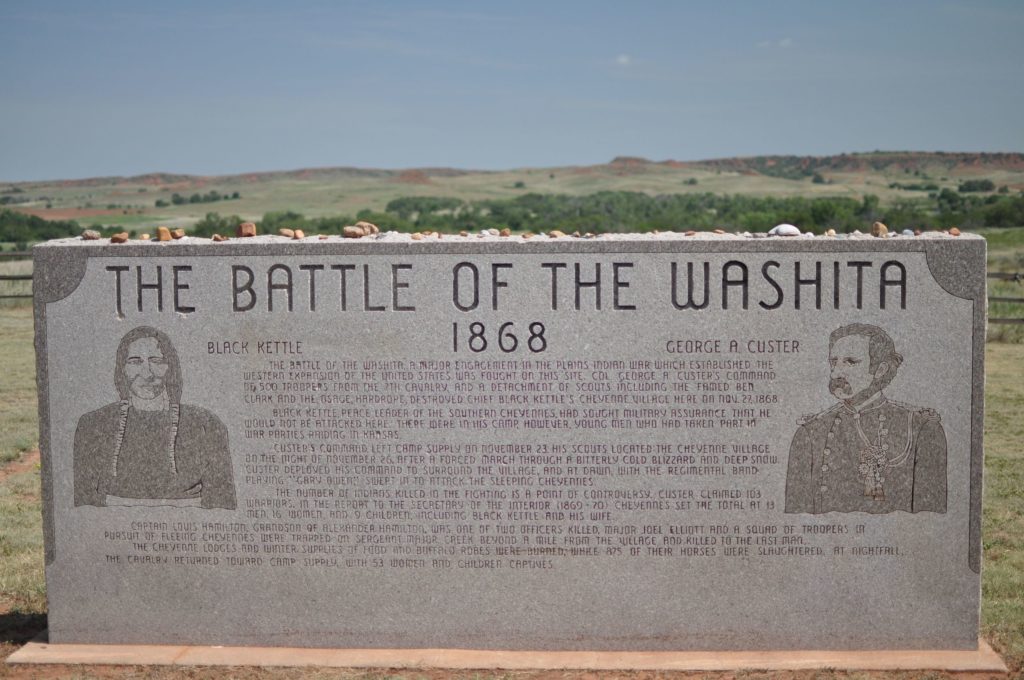
It’s on to our final three sites. Each of these sites was part of a major historical event and two of them are regrettably connected to tragedies. One of those two is our next site. At #3 on our list of the Best Historic Sites In Oklahoma is Washita Battlefield National Historic Site.
On November 27, 1868, Lt. Colonel George Armstrong Custer led his famed 7th US Cavalry on a surprise dawn attack on a Cheyenne village. In his military dispatches, Custer referred to it as the Battle of Washita.
The strike was hailed by the military as a significant victory aimed at reducing Indian raids on frontier settlements as it forced the Cheyenne back to the reservation set aside for them.
For a long time it was seen as a glorious victory for Lt. Col. George Armstrong Custer against Chief Black Kettle of the Cheyenne Nation. Instead of winning against Cheyenne soldiers, however, Custer and his troops reportedly massacred more than a hundred people, including Chief Black Kettle and his wife.
From the numbers of women and children who were senselessly slaughtered at the site, it has since been determined to have been not a battle, but a massacre.
The Dust & Fire Trail
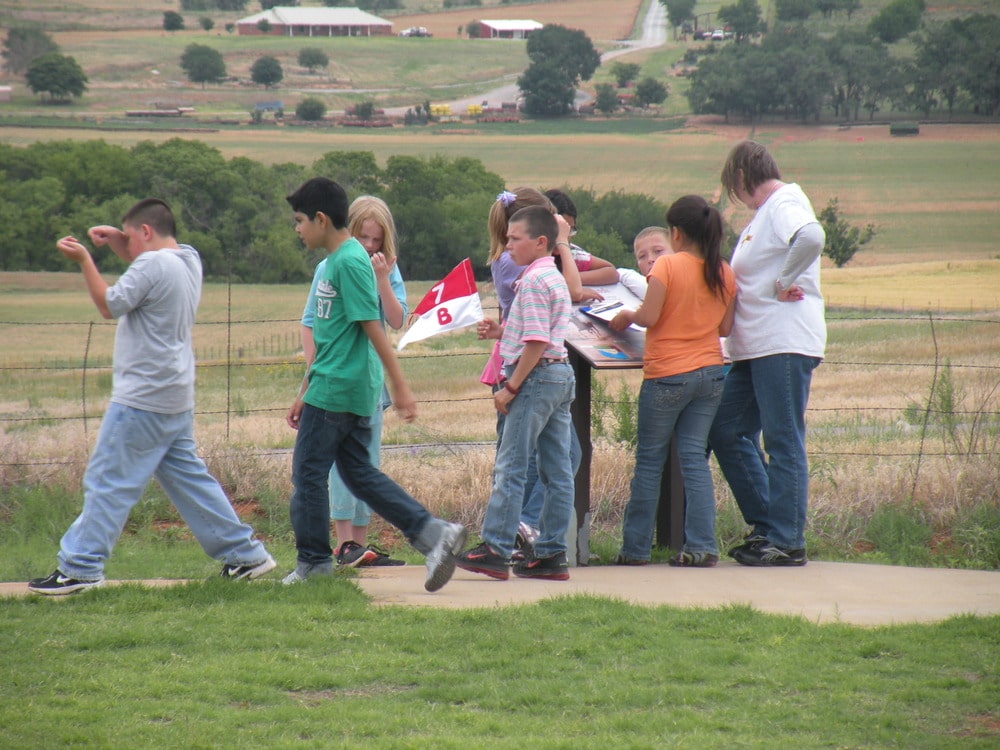
Visitors can learn about this time in history at the Washita Battlefield National Historic Site in Roger Mills County. There is a one and a half mile trail which is self guided with many brochure stops along the way.
There’s also a shorter Dust & Fire Trail. While walking it, you can learn about life on the prairie. Visitors can also explore flora, fauna, a dugout house, and a working windmill.
If you’ve never been there before then I would highly recommend starting your visit at the visitor center. It provides interactive and educational experiences including a 27-minute park film called Destiny at Dawn.
The film describes the engagement which happened on the site and the events leading up to it. There’s also a museum providing views of the Washita River Valley, which includes the Western National Parks Association Bookstore.
2. Santa Fe National Historic Trail
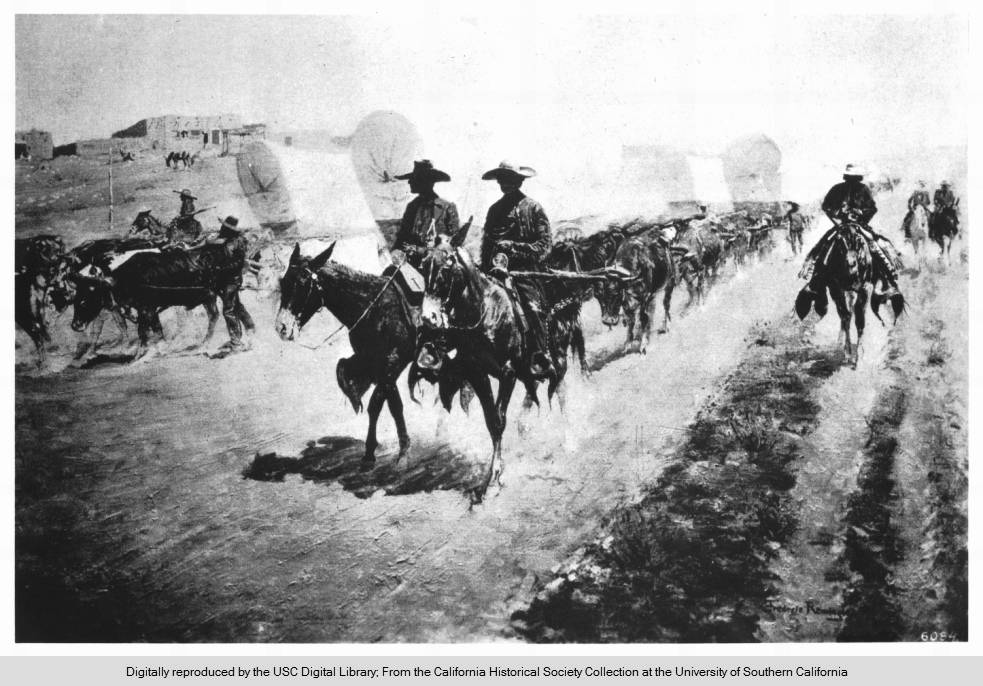
In the runner-up spot at #2 is one of the most famous historic trails in America. It’s the Santa Fe National Historic Trail.
The Santa Fe National Historic Trail stretches from Missouri to Santa Fe, New Mexico, USA. It was established in the late 1700s as a trade route between American settlements in Missouri and Mexican settlements in Santa Fe.
The trail was used for decades by traders, settlers, and military personnel, who traveled through the Great Plains, the Rockies, and the deserts of the Southwest. The trail played a key role in the expansion of the American frontier and the development of the American West.
In 1987, the Santa Fe National Historic Trail was designated as a National Historic Trail by the U.S. government, and today it is preserved and managed as a recreational trail by the National Park Service.
Visitors can hike or drive parts of the trail, visit historic sites along the way, and learn about the history and cultural heritage of the American West.
The Routes
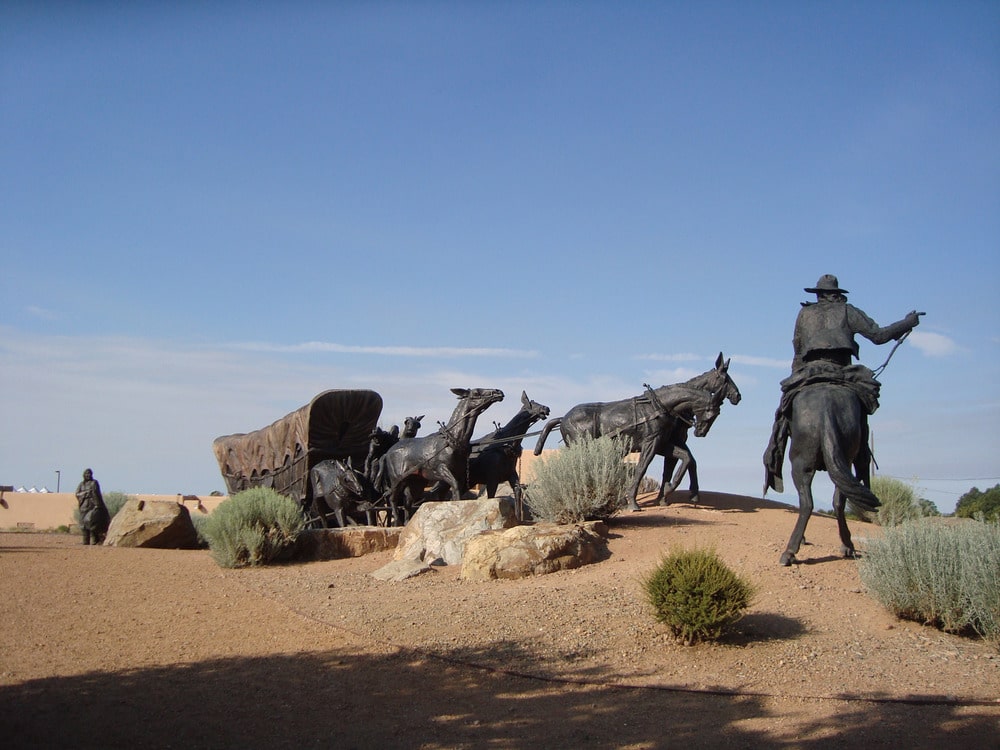
There were two major routes. Some used the Mountain Route, which offered more dependable water, but required an arduous trip over Raton Pass.
Others took the Cimarron Route. It was shorter and faster but required knowledge of where the route’s scarce water supplies were located. It you ran out of water then you weren’t likely to survive the journey.
Now here’s an interesting fact. During the Mexican-American War, the U.S. Army actually followed the Santa Fe Trail westward to successfully invade Mexico. The Treaty of Guadalupe Hidalgo ended this war in 1848.
Afterward, the Santa Fe Trail became a national road connecting the more settled parts of the United States to the new southwest territories.
The Santa Fe Trail Today
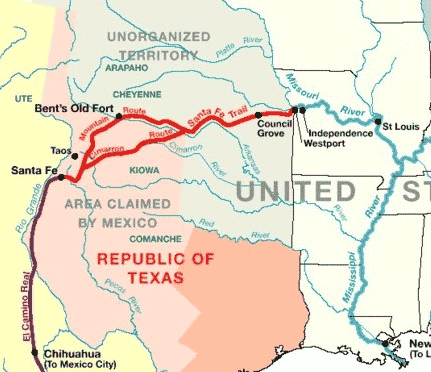
Today the Santa Fe National Historic Trail extends between western Missouri to Santa Fe, New Mexico. Along the way, there are museums, historic sites, landmarks, and original trail segments located all along the length of this historic trail.
There’s a wonderful book filled with amazing stories about life on the legendary Santa Fe Trail. Written by David Dary, it’s titled The Santa Fe Trail: Its History, Legends, and Lore.
1. Oklahoma City National Memorial
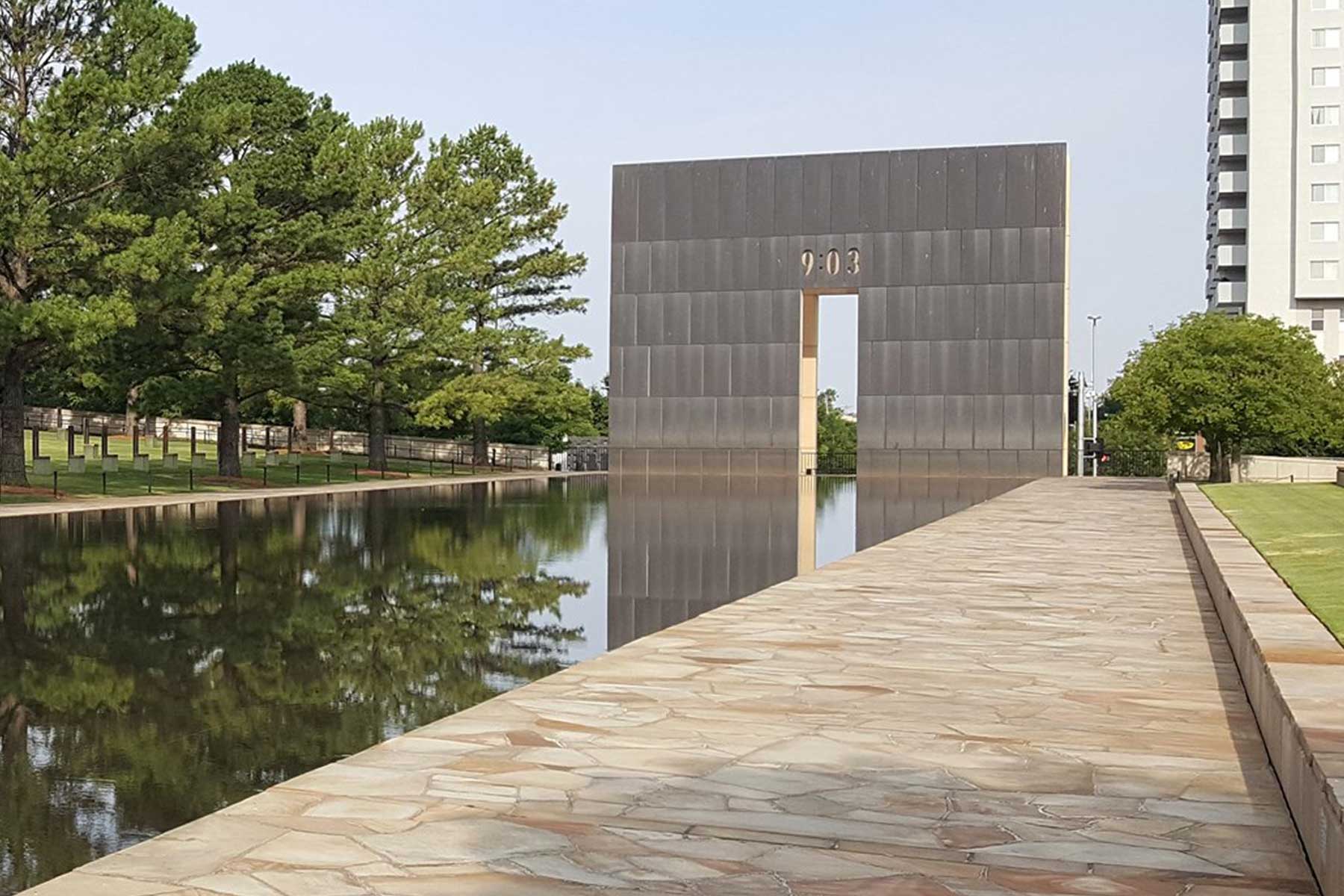
As the #1 Historic Site In Oklahoma, More Than Just Parks selected a site which commemorates the greatest single tragedy to befall the people of Oklahoma in the 20th century. It’s the Oklahoma City National Memorial.
The Oklahoma City National Memorial commemorates the victims of the Oklahoma City bombing, which occurred on April 19, 1995.
The bombing was carried out by Timothy McVeigh and Terry Nichols, who detonated a truck bomb in front of the Alfred P. Murrah Federal Building, killing 168 people and injuring over 600 others.
The attack was the deadliest act of domestic terrorism in the United States before the 9/11 attacks, and it had a profound impact on the people of Oklahoma City and the nation as a whole.
The Oklahoma City National Memorial was established to honor the victims of the bombing and to provide a space for reflection and healing for the families and loved ones of those affected by the tragedy.
Outdoor Symbolic Memorial
The memorial includes the Outdoor Symbolic Memorial, which features a reflecting pool, 168 empty chairs representing each victim and the Survivor Tree, a symbol of resilience and hope.
The memorial also includes the Memorial Museum which features exhibits and artifacts related to the bombing and its aftermath.
The Oklahoma City National Memorial is a powerful and moving tribute to the victims of the bombing and serves as a reminder of the devastating impact of terrorism and the importance of healing and remembrance.
It is a popular destination for visitors and it is open to the public year-round. The Memorial also holds annual events such as the Survivor Tree Lighting Ceremony and the Oklahoma City National Memorial Marathon.
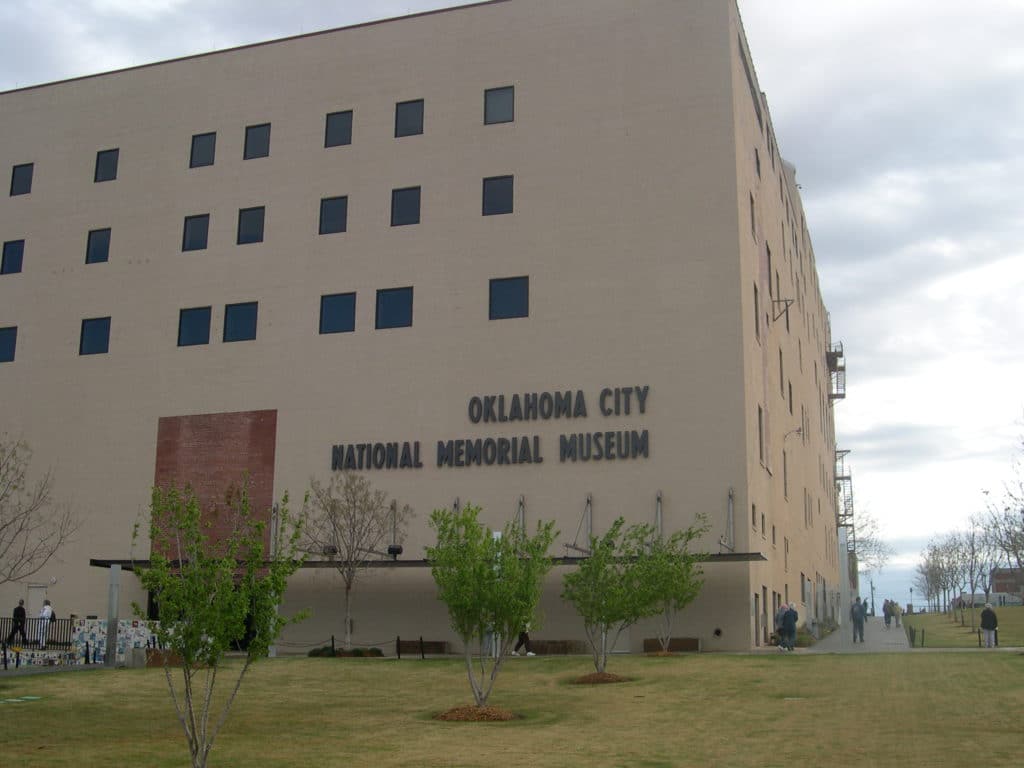
List Of Historic Sites In Oklahoma
- Oklahoma City National Memorial
- Santa Fe National Historic Trail
- Washita Battlefield National Historic Site
- Guthrie Historic District
- Spiro Mounds Archaeological Center
- Chisholm Trail Museum
- Honey Springs Battlefield State Park
- USS Batfish
- Museum Of The Western Prairie
- Fort Gibson Historic Site
- Sequoyah’s Cabin
- A.J. Seay Mansion
- Cherokee Heritage Center
- George M. Murrell Home
- Price Tower
Why Trust Us About Historic Sites In Oklahoma?
We’re Jim Pattiz and Will Pattiz, collectively known as the Pattiz Brothers and we absolutely LOVE the national parks.
You should probably know that we don’t just make this stuff up out of thin air. We’ve spent our entire adult lives exploring and filming America’s national parks and public lands.
We’ve worked with the National Park Service, the Department of Interior, USDA, U.S. Forest Service, and more for years creating films on important places and issues. Our work has been featured in leading publications all over the world and even some people outside of our immediate family call us experts on the national parks.
And, in 2018, our father – having spent a lifetime teaching history – joined us so that he could help us to tell the stories behind these amazing places.
Meet The Parks Brothers
We Hope You’ll Follow Our Journey
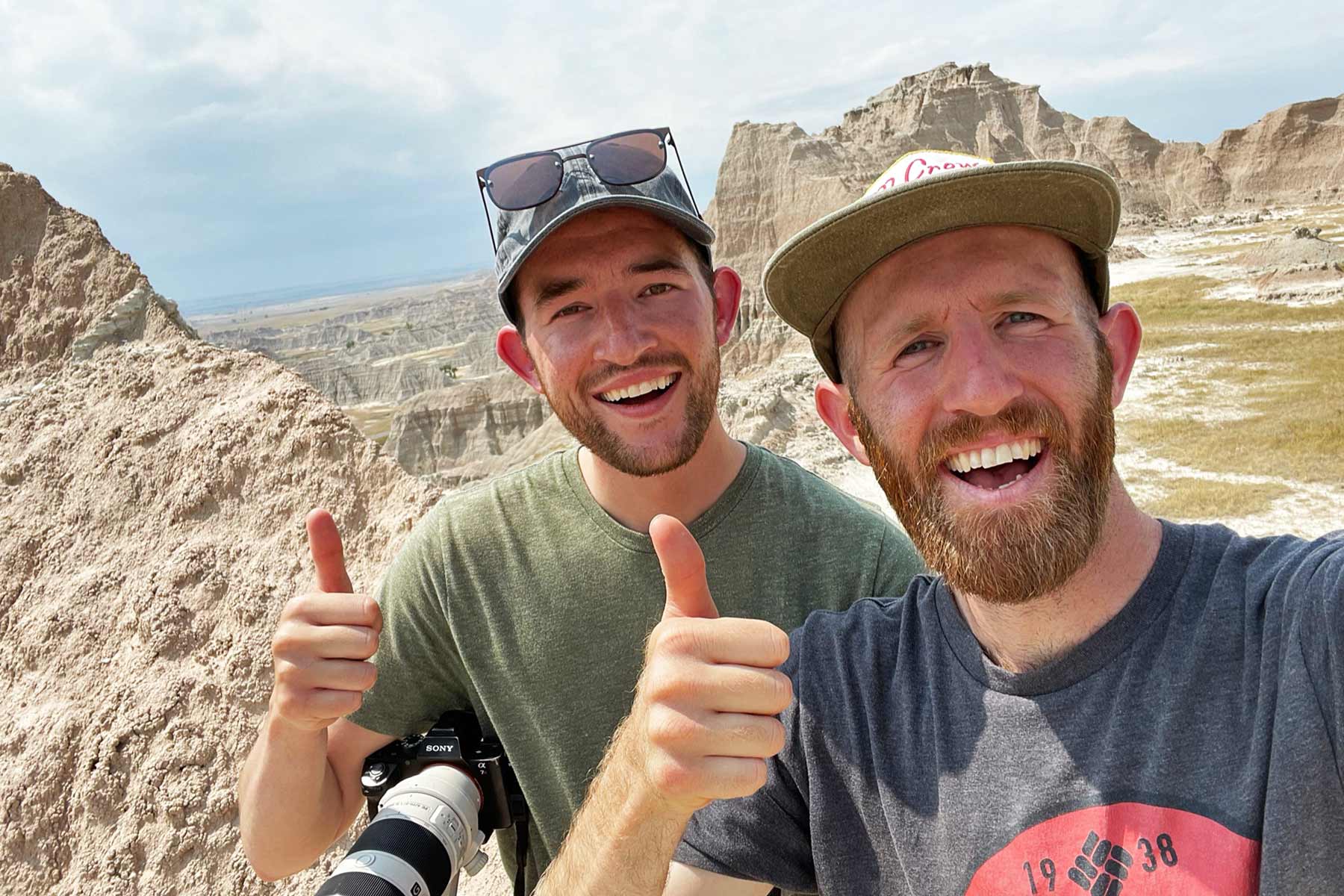
Our goal here at More Than Just Parks is to share the beauty of America’s national parks and public lands through stunning short films in an effort to get Americans and the world to see the true value in land conservation.
We hope you’ll follow our journey through the parks and help us to keep them the incredible places that they are. If you’re interested in joining the adventure then sign up below!
Related Links
What Is A National Park? To learn more about the difference between the various National Park Service designations check out our article that explains everything!
Oklahoma National Parks: 6 SURPRISING Oklahoma National Parks
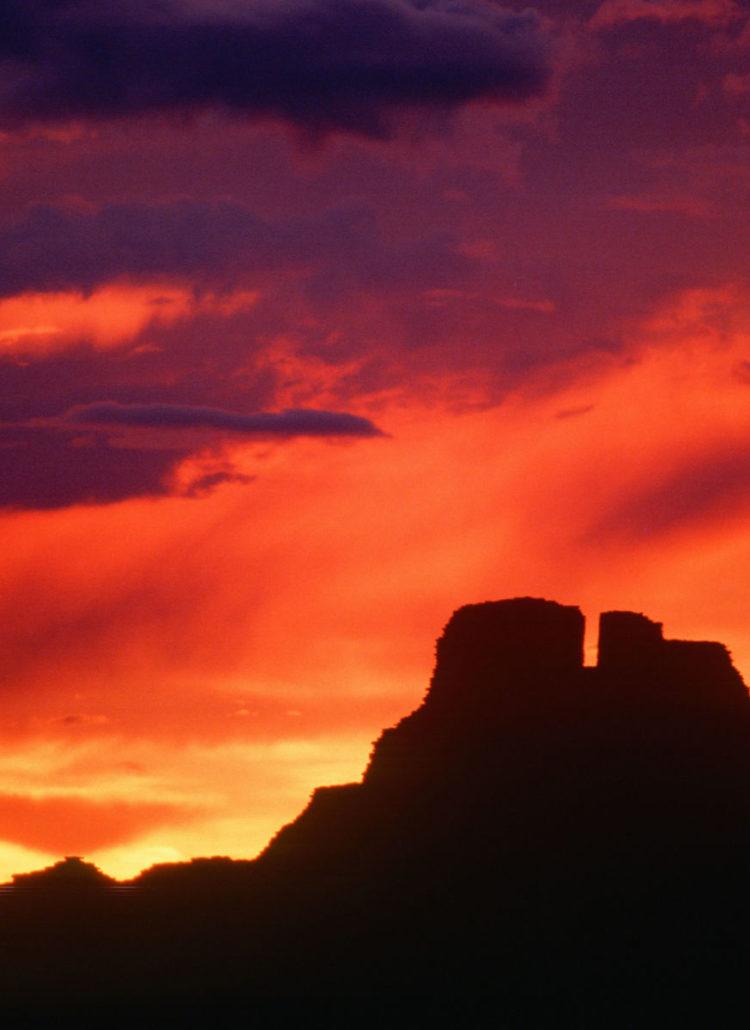
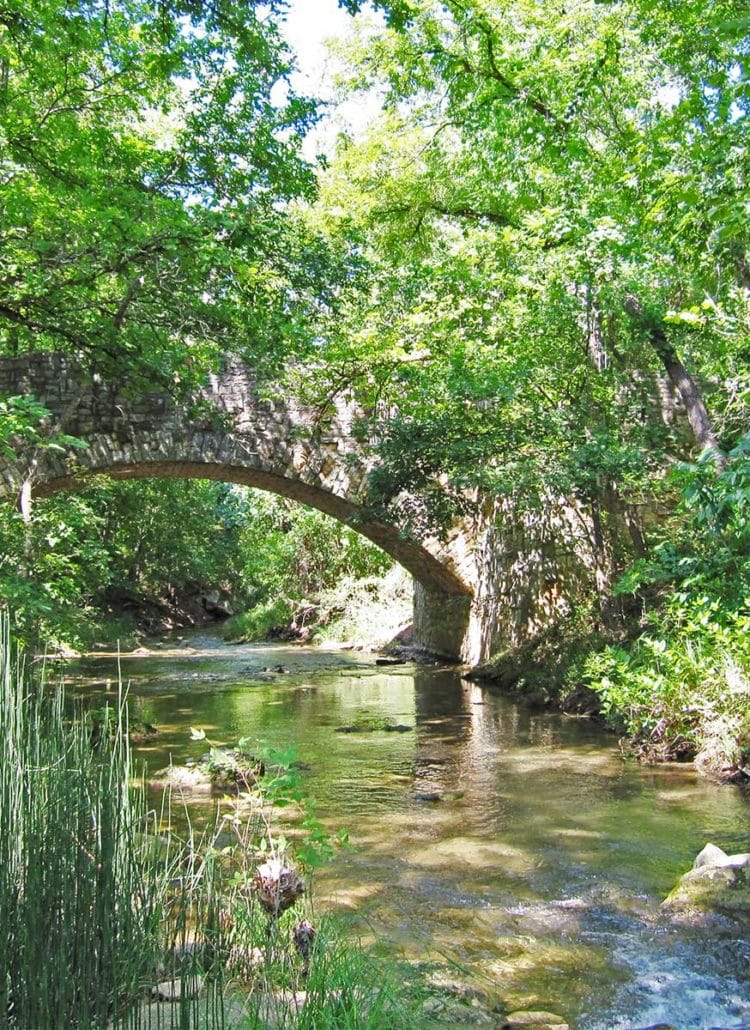
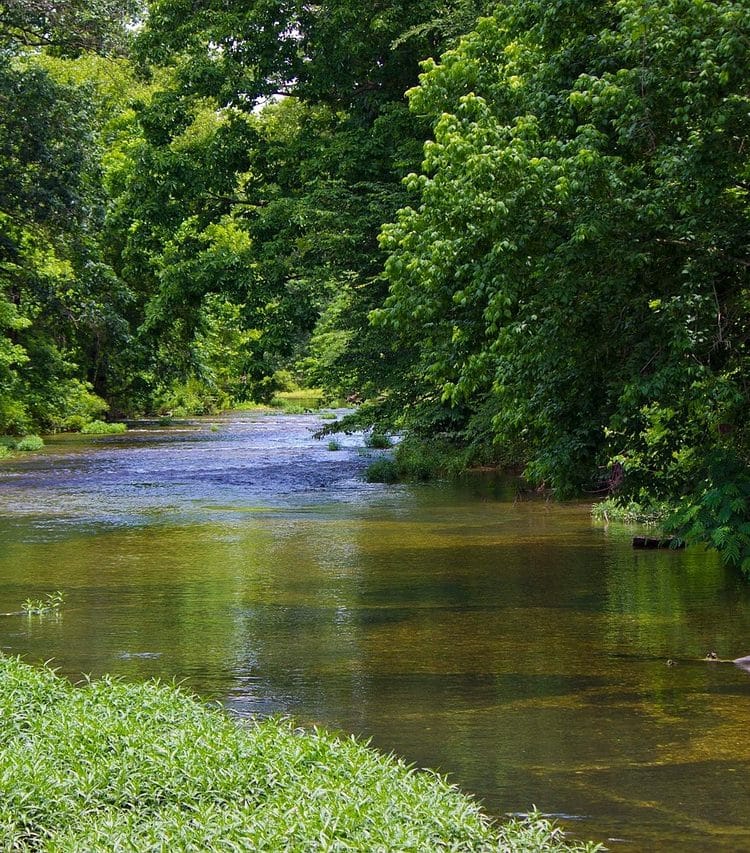
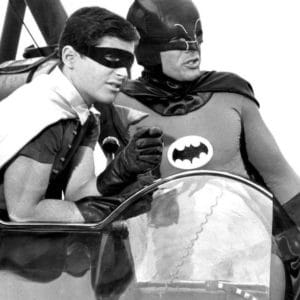
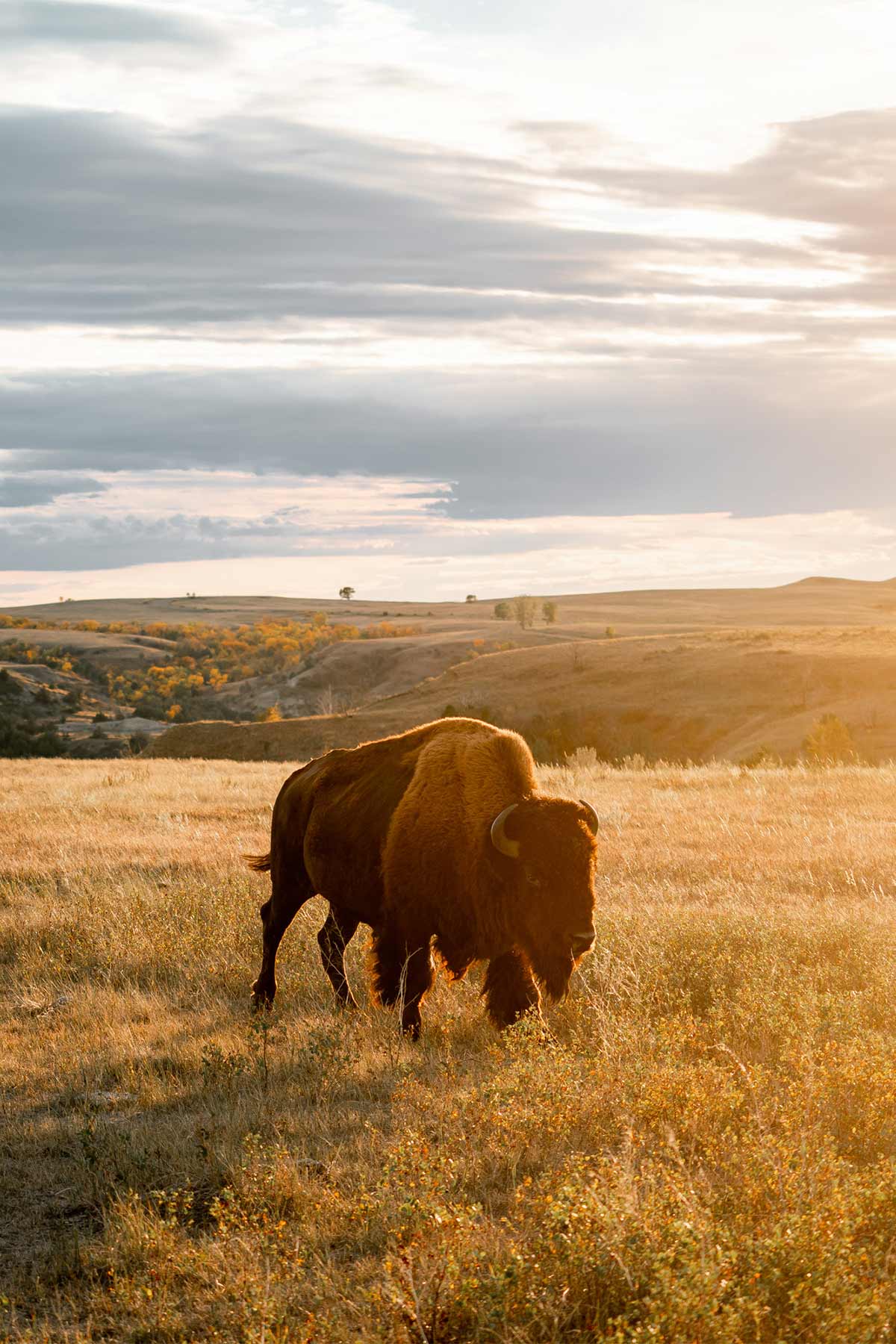
Leave a Reply